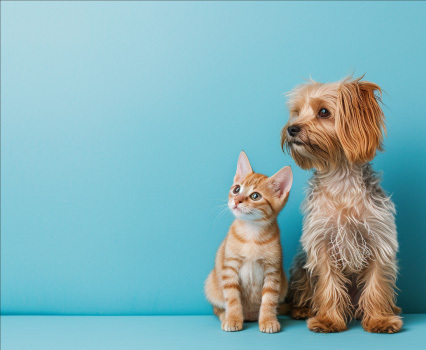The U.S. Pet Insurance Market: A Booming Safety Net for Beloved Companions

The pet insurance sector in the US is no longer just a niche; it has grown to become an essential part of how Americans care for their beloved furry companions. The pet insurance market has exhibited a strong growth trajectory, which can be attributed to rising costs in veterinary treatments, increased pet humanization, and the expansion of the digital insurance industry.
Market Snapshot & Growth Trajectory
According to the report by Marks and Spark Solutions, the US pet insurance market was valued at USD 4,000 million in 2023 and is expected to grow at a 13.15% CAGR, reaching USD 10,587 million by 2030. The American Animal Hospital Association highlights the increasing preference for pet insurance, driven by the rising cost of veterinary treatments over the past decade. The cost of veterinary treatments has increased by 60%, and the 2025 data highlights the current average prices of pet insurance, which are $32.21 for cats and $62.44 for dogs.
What’s Fueling the Surge?
Several key factors contribute to the growth of this sector.
1. Increase in veterinary costs: The report states that the rise in veterinary expenses between the years 2019 and 2024 has been approximately 38.5%. Over the decade, the cost of veterinary services has outpaced the inflation rate, primarily due to advanced diagnostics and high-cost procedures, such as chemotherapy and MRI. Such a steep rise in costs is prompting pet owners to reassess their finances and consider investing in pet insurance to protect their pets.
2. Pet Humanization & Ownership Trends: Now, pets are treated more as family members rather than just as animals. The humanization of nature towards pets is now prompting owners to prioritize their pets' health through insurance.
3. Digital & App-Driven Insurance Models: With an increase in digital models, insurers are now utilizing data analytics, flexible policy structures, and app-based claim management to make their pet insurance more customer-friendly and accessible.
4. Growing Awareness through Partnerships: Insurance companies are now forming strategic partnerships with veterinary clinics and other stakeholders to drive awareness and motivate pet parents to purchase on-the-spot policy plans and sign up.
Challenges on the Path
Despite an optimistic look for its future, there are many hurdles in the market:
• Despite an increased preference and a shift in pet parent behavior, the overall penetration in the US market remains relatively low compared to its potential, as many pet owners don’t fully understand the insurance concept or view it as an optional add-on.
• Some policies come with exclusion clauses, long waiting periods, or complex terms, which can lead to dissatisfaction during claims and deter pet owners.
• With the rise in inflation and economic uncertainty, premiums are rising as insurers' prices increase to cover higher claim costs.
Opportunities: Where Insurers Can Win
• Insurers can expand beyond just accident or illness coverage and also include wellness programs, routine check-ups, and vaccinations.
• Insurance companies can create more personalized health models by utilizing data on pet health, behavior, and claims, which can more accurately reflect risk and encourage greater uptake of these insurance plans.
• To improve value and retention rate, insurers can bundle pet insurance with other standard insurance policies.
Brand Landscape & Consumer Sentiment
One of the most compelling parts of the MarkSparks report involves brand perception and recall. Key insights include:
• The study surveyed 1,000 pet owners in the US, aged between 18 and 74 years old, who had at least one dog or cat in the past year, ensuring a balanced composition of at least 60% dog owners and 40% cat owners. This ensured a balanced sample across age, pet type, and geography.
• The leaders in top-of-mind and aided recall are Trupanion and Nationwide Insurance companies.
• Trupanion benefits from visibility at veterinary clinics, as they have an on-site vet integration system. Whereas Nationwide’s heritage and reputation help gain trust for its pet insurance division, even among customers who don’t have any pet policy.
• Healthy Paws is in the lead with an NPS of 62 and an 85% retention rate, which can be attributed to its transparent claims and customer-first model.
• Trupanion enjoys extreme loyalty, mainly due to its real-time claim payments and consistent service.
• New brands entering the market are building awareness through social media and influencers, but long-term loyalty remains elusive.
Conclusion
The Pet insurance market in the US is showing a trend of growth in the future. The increased costs of veterinary treatments drive this trend, as do heightened emotional attachments to pets and a rise in digital innovation. This market is evolving rapidly, but there is still room for growth in this sector. Users who prioritize increased transparency, a better customer experience, and risk management by leveraging relevant data insights will be the leading players in the future. For pet owners in the US, this will provide a way to protect their beloved four-legged family member from any accidents or illness in the future.